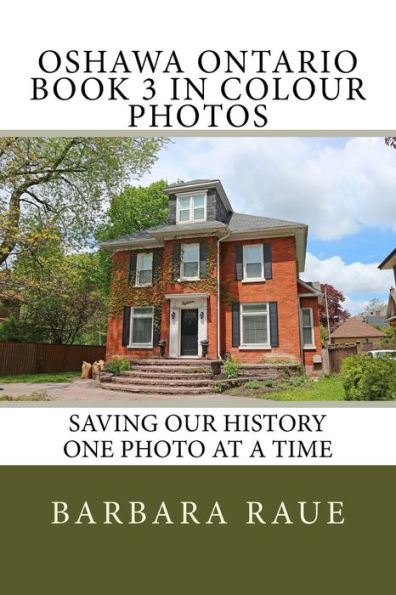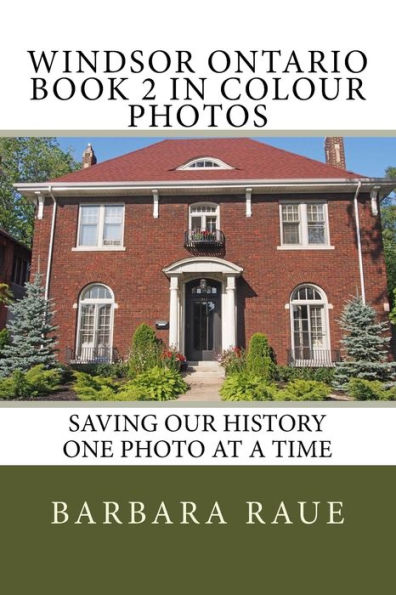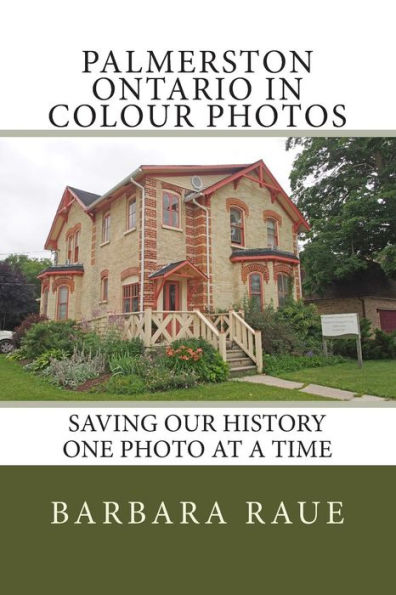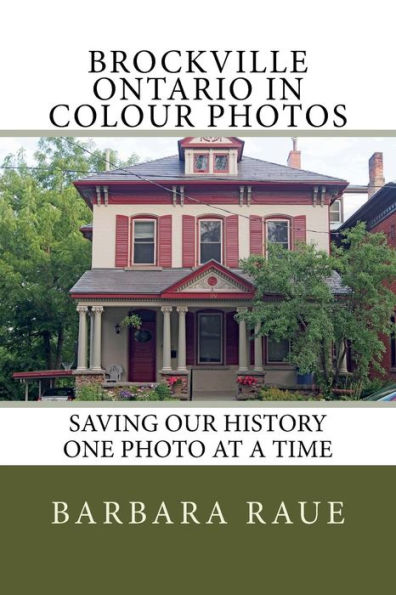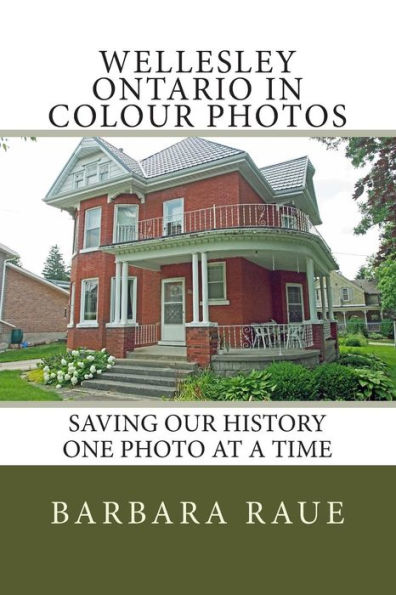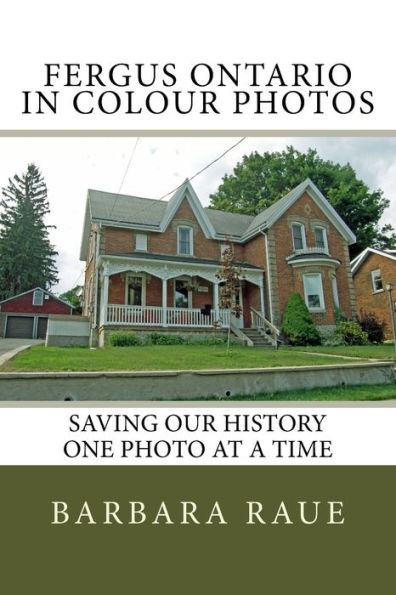Home
Paris Ontario Book 1 in Colour Photos: Saving Our History One Photo at a Time
Barnes and Noble
Loading Inventory...
Paris Ontario Book 1 in Colour Photos: Saving Our History One Photo at a Time in Bloomington, MN
Current price: $14.99

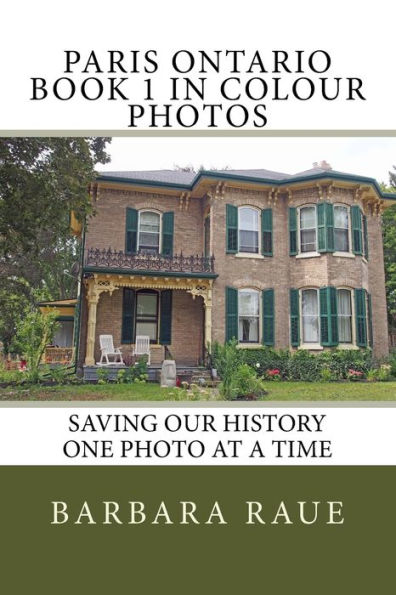
Paris Ontario Book 1 in Colour Photos: Saving Our History One Photo at a Time in Bloomington, MN
Current price: $14.99
Loading Inventory...
Size: OS
Paris, Ontario is located on the Grand River. It was first settled by Hiram Capron a native of Vermont who, in 1822, emigrated to Norfolk County where he helped to establish one of Upper Canada's earliest iron foundries. He settled here at the Forks of the Grand (where the Grand and Nith Rivers meet) in 1829, divided part of his land into town lots, and in 1830 constructed a grist-mill and named the town after the gypsum deposits that were mined nearby. Gypsum is used to make plaster of Paris. The town of Paris is often referred to as the "cobblestone capital of Canada" because of the many cobblestone buildings that are still standing.Paris is home to thirteen cobblestone buildings. Mason Levi Boughton inspired Paris' cobblestone technique in the mid to late 1800s. It is estimated that over 14,000 cobblestones were required to build one traditional farmhouse. Each cobblestone is about the size of a sweet potato. Cobblestone architecture refers to the use of cobblestones embedded in mortar to erect walls of houses and commercial buildings.Levi Boughton was born in Normandale, New York in 1805. He came to Brantford, Ontario in 1835 and in 1838 he moved to Paris. He brought the cobblestone craft to Paris. The cobbles are fist-sized rocks. Boys were paid ten cents a day to walk beside a sled pulled by oxen and throw cobbles turned up by ploughing into the sled. Mortar is laid in horizontal courses with cobbles framed with mortar joints. Cobblestone walls use lime mortar which is a mixture of lime and sand. Lime mortar sets slower, is more elastic and easier to work with than cement-based mortars. Because lime mortars are porous, relatively soft, and have low tensile strength, corners and wall openings in cobblestone structures are strengthened by rectangular blocks of stone called quoins. Window sills and lentils were also reinforced.Building a cobblestone wall: Working from a foundation of large blocks, an inside wall is laid and the quoins are put in place. A thick bed of mortar is laid between the quoins and individual size sorted cobbles are placed on this mortar bed so that the upper surfaces are roughly horizontal. The cobbles are placed so that they have a gap of two to four centimeters between them. The mason then fills the gap between the stones with mortar. Larger stones extend further back into the mortar trough than the shorter ones. The larger stones help to strengthen the final wall by tying the cobblestone work to the interior wall. After one or two courses of cobblestones are laid, the trough is filled with mortar and waste stone or rocks that are not well sized, shaped or colored for the cobblestone exterior.Only two or three courses of cobblestones can be laid in one day. If more were attempted, the weight of overlying courses would cause the slow setting mortar of lower courses to bulge and sag. Cobblestones cannot be laid during rain or during freezing weather. Many large cobblestone houses took two to three years to complete.Jim Percival created scale models of the thirteen cobblestone buildings in Paris.
Paris, Ontario is located on the Grand River. It was first settled by Hiram Capron a native of Vermont who, in 1822, emigrated to Norfolk County where he helped to establish one of Upper Canada's earliest iron foundries. He settled here at the Forks of the Grand (where the Grand and Nith Rivers meet) in 1829, divided part of his land into town lots, and in 1830 constructed a grist-mill and named the town after the gypsum deposits that were mined nearby. Gypsum is used to make plaster of Paris. The town of Paris is often referred to as the "cobblestone capital of Canada" because of the many cobblestone buildings that are still standing.Paris is home to thirteen cobblestone buildings. Mason Levi Boughton inspired Paris' cobblestone technique in the mid to late 1800s. It is estimated that over 14,000 cobblestones were required to build one traditional farmhouse. Each cobblestone is about the size of a sweet potato. Cobblestone architecture refers to the use of cobblestones embedded in mortar to erect walls of houses and commercial buildings.Levi Boughton was born in Normandale, New York in 1805. He came to Brantford, Ontario in 1835 and in 1838 he moved to Paris. He brought the cobblestone craft to Paris. The cobbles are fist-sized rocks. Boys were paid ten cents a day to walk beside a sled pulled by oxen and throw cobbles turned up by ploughing into the sled. Mortar is laid in horizontal courses with cobbles framed with mortar joints. Cobblestone walls use lime mortar which is a mixture of lime and sand. Lime mortar sets slower, is more elastic and easier to work with than cement-based mortars. Because lime mortars are porous, relatively soft, and have low tensile strength, corners and wall openings in cobblestone structures are strengthened by rectangular blocks of stone called quoins. Window sills and lentils were also reinforced.Building a cobblestone wall: Working from a foundation of large blocks, an inside wall is laid and the quoins are put in place. A thick bed of mortar is laid between the quoins and individual size sorted cobbles are placed on this mortar bed so that the upper surfaces are roughly horizontal. The cobbles are placed so that they have a gap of two to four centimeters between them. The mason then fills the gap between the stones with mortar. Larger stones extend further back into the mortar trough than the shorter ones. The larger stones help to strengthen the final wall by tying the cobblestone work to the interior wall. After one or two courses of cobblestones are laid, the trough is filled with mortar and waste stone or rocks that are not well sized, shaped or colored for the cobblestone exterior.Only two or three courses of cobblestones can be laid in one day. If more were attempted, the weight of overlying courses would cause the slow setting mortar of lower courses to bulge and sag. Cobblestones cannot be laid during rain or during freezing weather. Many large cobblestone houses took two to three years to complete.Jim Percival created scale models of the thirteen cobblestone buildings in Paris.

